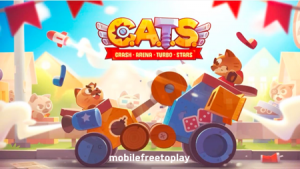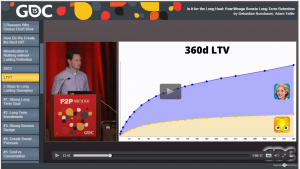Toon Blast & The Death of Saga
At the beginning of this year, Peak games soft-launched a game called “Toon Blast”. Some developers took a look, but most pushed it aside. The game appeared to be a direct re-skin of Toy Blast, Peak games’ original hit game.
Time went on, and Toon Blast was finally globally launched in August 2017. Again, most developers took a look, dismissed it as a re-skin, then walked away. But under the surface Peak Games was testing a key change within the game that is a true sign of the times: they removed the Saga Map:

Two versions that Peak Games was testing in August. One version with the Saga map, another without it.
For those creating matching games, this has been a slow but obvious change. Since King dominated the puzzle game genre starting in 2012/2013 developers in the space have been actively trying to differentiate themselves from the dominant players.
The Evolution of the Matching Genre & Toy Blast
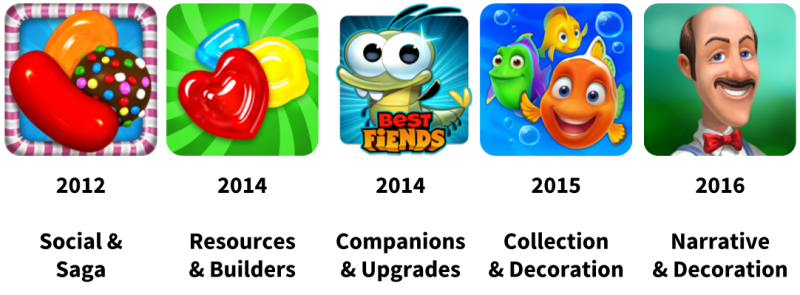
In 2014 there was Gummy Drop by Big Fish Games, which added a dash of resource management to the saga framework. Players collected resources to eventually be able to afford to move through gates. Also in 2014, Seriously launched Best Fiends, which added a light RPG upgrade system on top of the core mechanic. In 2015 Playrix launched Fishdom, where players could collect fish and decorate their fish tanks. In 2016 Playrix launched Gardenscapes, already deconstructed here, which added narrative and decoration to the saga metagame. The biggest games in the genre managed to add new elements to the metagame to separate themselves from the usual Saga-based model.
But during that time, most matching game companies stuck to the pure Saga framework. Some saw modest success with it, while others did not. Peak Games was one of the few who did see success with the Saga framework. Toy Blast, launched in 2015, featured a pure saga model, but with a new yet familiar take on the core mechanic.
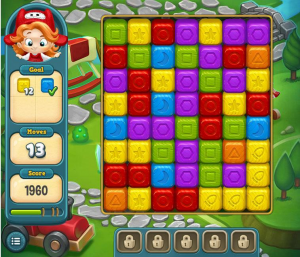
Toy Blast, Peak Games big hit, was one of the last games to see success with a pure saga based model.
Toy Blast’s main mechanic was similar to older games like Collapse, Diamond Dash or Pet Rescue Saga. Instead of asking players to swap, players simply had to tap individual groups of gems. Any group of 2 or more pieces could be removed instantly, but each costs a move. Similar to Candy Crush in terms of strategy, but feels very different. While the interaction itself is fast, as you get into the more difficult levels you start to see that this mechanic can be far more punishing if you’re not paying attention, and rewarding if you’re planning a few moves ahead.
Still, most developers dismissed Toy Blast initially as “just another Candy Crush clone” — but this is definitely not reflected in the numbers. Looking at net monthly revenue from Sensor Tower, Toy Blast has grown into a massive revenue driver:
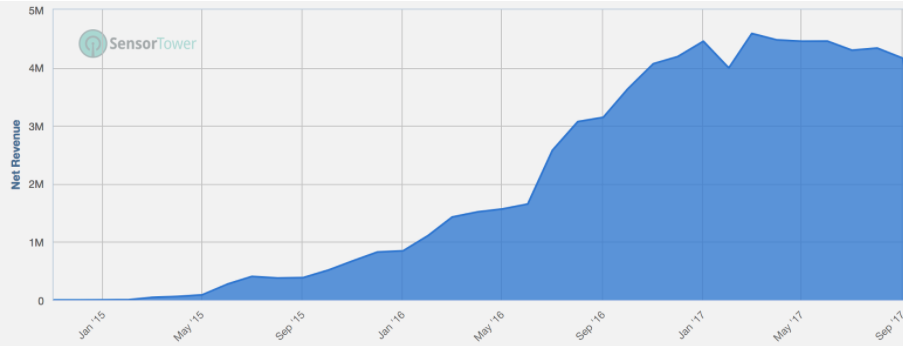
source: Sensor Tower Estimates
Toy Blast grew to be a sticky top grossing puzzle game. But unlike most top grossing games, it was clear that Peak Games had a slow and steady growth to the top. Much to the credit of their team, they managed through methodical improvements and strong performance marketing to build Toy Blast into the success it is today.
After the success of Toy Blast, it was no wonder that Peak Games started work on Toon Blast. It’s an obvious safe bet to repurpose the gameplay they already have. King and Playrix have done the same with their top franchises with clear success. Being able to retain players that lapse from your hit games by cross-promoting them to your new exciting games is powerful.
But why is it that Peak Games, the last developer to have found success with the “pure” saga model, opted for a radically different design in Toon Blast?
Why are top developers are abandoning the pure Saga model?
There are 2 key reasons for this.
Reason 1: Facebook doesn’t matter
The biggest shift that has changed since Candy Crush Saga first came out is that friends within games, especially through facebook connect, have become decreasingly important.
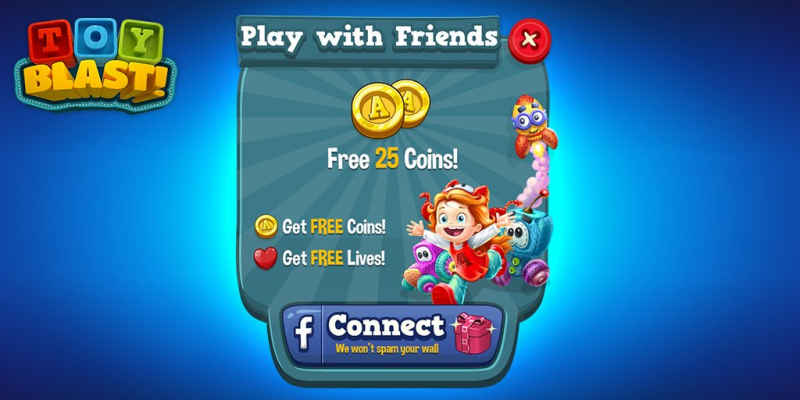
For one, facebook connection has gone steadily down since 2012. Players are less likely to connect their games, even when games offer big rewards for connecting. While socially connected players tend to retain longer (they see their friends progress) — players are less and less likely to opt-in to that kind of peer pressure on mobile. Especially in puzzle environments.

The first factor here is Facebook. Facebook’s strategy dramatically shifted for games after Candy Crush. Instead of allowing games to post spam all over walls and notify other players freely of every small bit of activity, Facebook has scaled down over the last 4 years the impact of facebook connect. They’ve seen the negative impact it has on their user experience, and slowly made changes to avoid games from taking advantage of their platform with spam. Adding to this, they shifted their revenue strategy to ads. Giving free virality to games, cuts into Facebook’s main revenue source. Instead of offering free virality, Facebook has gradually shut down their virality and instead sells the users to publishers through ads.
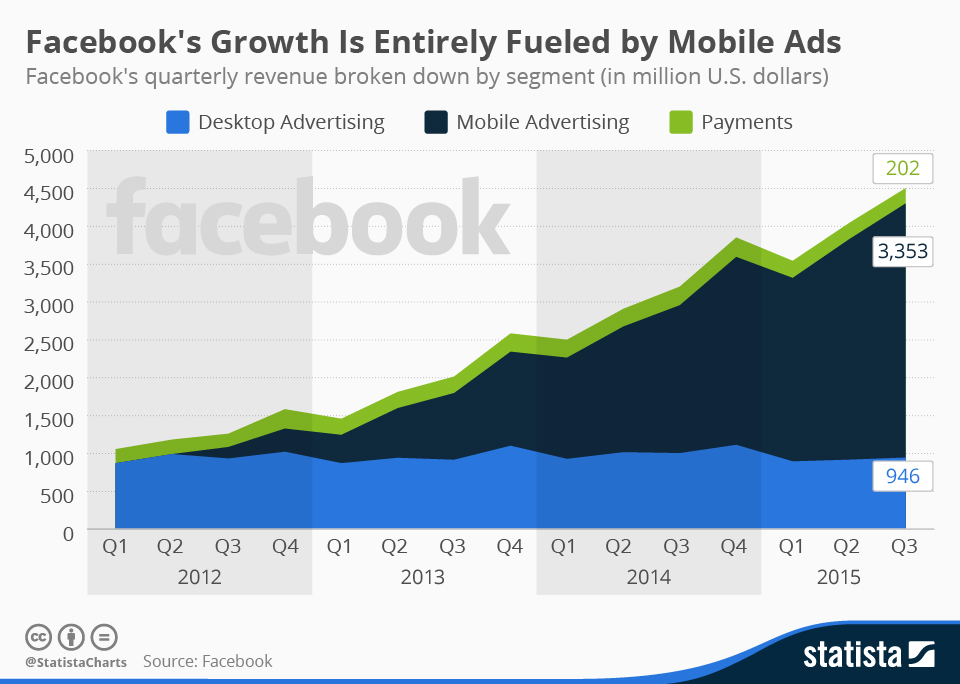
So with connection rates down and much of the importance of Facebook virality gone, puzzle games, which typically depended on this model to be successful, have turned to other sources to drive new users and retain their players.
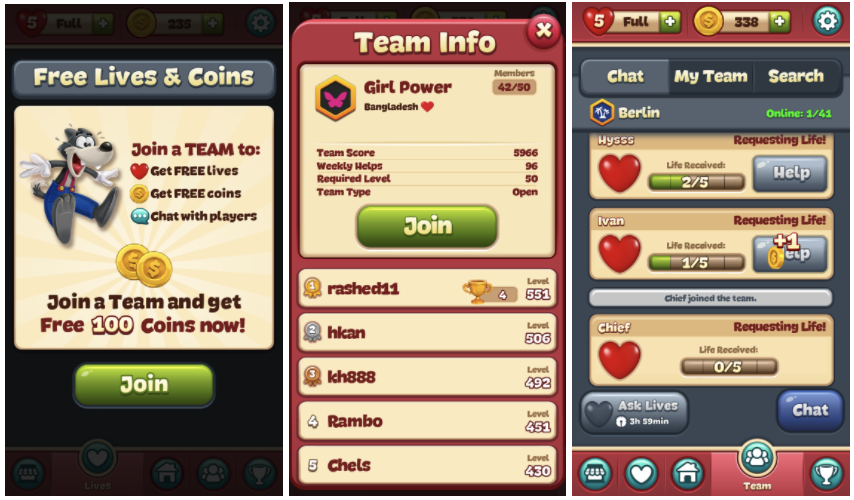
For Toon Blast, this means that instead of only allowing players to play together with their friends, they can now join guilds, which are made up of other active players in the game. Instead of players slowly becoming less engaged as their friends drop off in engagement, players are actively pushed to join together with other active players in the game. With Toon Blast, players send lives and earn coins based on how active their guild is. This is obviously taken out of the playbook of Clash Royale and most mid-core games on the AppStore. Many games have had guild features for years, and many have gone deeper with the mechanics. Yet this is a casual matching game — this is a bold choice.
Toon Blast’s addition of clans and guilds is a sign of the times that free facebook virality is gone, and that games can’t rely solely on a player’s group of friends to give reasons to come back and progress in a game.
With facebook gone, developers need to push players to create their own bonds with other players that are active in the game
The standard guild system in Toon Blast accomplishes this.
Reason 2: Events are more Important
The second reason why Saga has been cut from Toon Blast, is Peak Game’s experience with what drives meaningful revenue growth: Events.
If you look back and the timeline of Toy Blast, and what drove the growth of their revenue from 2015 to 2016: it’s a clear focus on engagement events and competitive events.
Looking at how King, Playrix, Wooga and Peak have managed to drive stronger retention in their games, it’s not from adding social features. It has been from adding features to the game that push players to complete more levels, faster. Features like the “Star Chest” in Toon Bast: each star you gain on a level fills up a bar which grows towards a chest. A chest that rewards a player with boosts and coins to help them through tough levels.
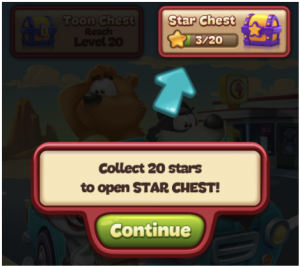
Or features like the “Crown Rush” event in Toy Blast: which demands that players complete certain levels before a time limit counts down.
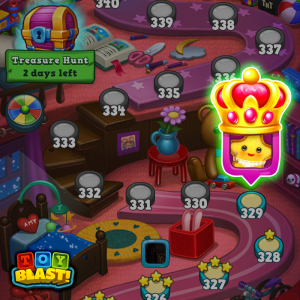
These type of single-player, goal-driven engagement events drive retention and drive monetization in players. Looking at the UI/UX of Toon Blast, now with the Saga map removed, these can now be far more centre stage, and feel far less “tacked on” than the usual Saga Map:
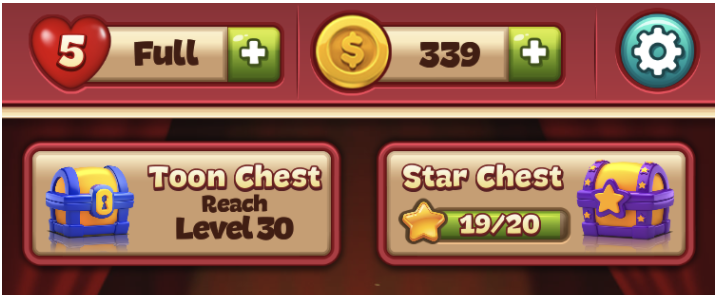 But besides engagement events, Peak Games’ prominent form of revenue growth comes from competitive events within the game. Events which pull players together and ask them to compete against each other for prizes. This is usually just reinforcing the core loop: asking players to progress as fast as they can within a limited time for access to great prizes. Best shown in games like Gardenscapes’ Fireworks Festival:
But besides engagement events, Peak Games’ prominent form of revenue growth comes from competitive events within the game. Events which pull players together and ask them to compete against each other for prizes. This is usually just reinforcing the core loop: asking players to progress as fast as they can within a limited time for access to great prizes. Best shown in games like Gardenscapes’ Fireworks Festival:
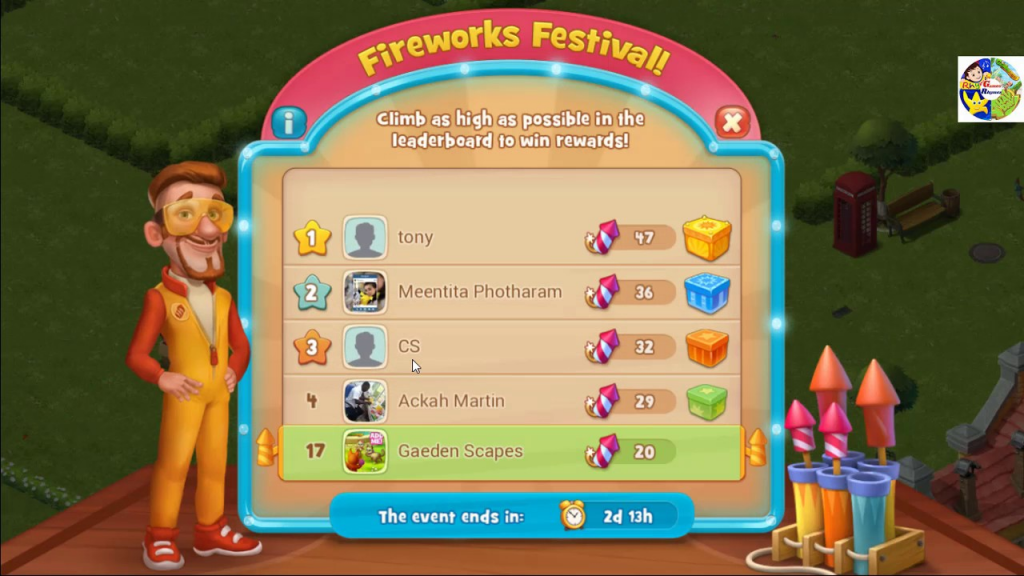
Engagement + Competitive events are what drove Toy Blasts’ growth, so of course, Peak Games would want to double down on that with Toon Blast. By adjusting away from the simple saga map model, they now have a method to make this far more a part of the core. Mimicking the same UX patterns as Clash Royale, to put events as the core focus for players.
In Conclusion
Peak Game’s decision to move Toon Blast away from a typical Saga map UI was a bold choice, but one that clearly is a sign of the times.
- The importance of Facebook has faded to a point that even puzzle/casual developers are leaning on guild-like structures to retain players
- Since events are the major revenue driver for puzzle games, toon blast puts its UI focus much more on events than on the saga progress
With everything in life and in video games, what goes up must eventually come down.
Saga was one of those trends that has been up for so long that many of us were asking when would it ever fade. What would come next. We now have our answer.





